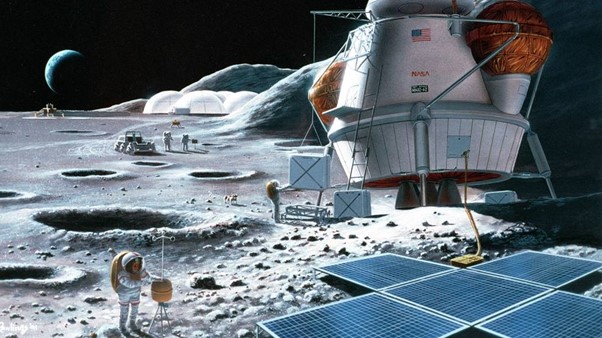Space Sciences and Technological Building

Introduction
Space Sciences and Technological Building have forged an inseparable bond, propelling humanity into the cosmic frontier. The collaboration between these two domains has been instrumental in driving innovation, revolutionizing industries, and opening up possibilities beyond Earth’s confines. In this article, we delve into the profound interplay between space sciences and technology, examining how their synergy is reshaping our future, particularly in the realm of construction and infrastructure development.
Unraveling the Cosmic Mysteries
Understanding the Universe has been a driving force in space sciences, leading to remarkable discoveries. Through telescopes, satellites, and probes, scientists have unveiled cosmic phenomena, identified celestial bodies, and probed the depths of space. Technologies like the Hubble Space Telescope have offered unprecedented insights into distant galaxies, fostering our understanding of the cosmos.
Satellite Technology: Bridging Gaps and Enabling Communication
The advent of satellite technology has redefined connectivity on a global scale. Satellites orbiting Earth facilitate communication, navigation, and observation. They have transformed how we communicate, enabling seamless global connectivity even in remote regions. Furthermore, these satellites play a pivotal role in monitoring weather patterns, mitigating natural disasters, and supporting various sectors such as agriculture and transportation.
Exploration and Innovation in Space Travel
The quest to explore beyond our planet has driven innovation in space travel technology. From the pioneering days of the Apollo missions to the current endeavors of Mars exploration, advancements in propulsion systems, materials science, and robotics have been crucial. These innovations not only enable space exploration but also have tangible applications on Earth. For instance, developments in lightweight materials and energy-efficient systems designed for space travel find applications in constructing more resilient and sustainable buildings.
Technology in Sustainable Infrastructure Development
Space sciences have contributed significantly to the development of sustainable technologies for building construction. Materials developed for space missions, like advanced composites and insulating materials, have found their way into modern construction practices. These materials offer enhanced durability, energy efficiency, and resistance to extreme conditions, aligning perfectly with the growing demand for sustainable infrastructure on Earth.
3D Printing: Revolutionizing Space Habitats and Earthly Structures
The concept of 3D printing has emerged as a game-changer in both space exploration and terrestrial construction. In space, 3D printing technology enables the creation of habitats and structures using local resources, reducing the need for transporting materials from Earth. This concept holds promise for future missions to other planets, where astronauts could potentially build habitats using indigenous materials. On Earth, 3D printing has revolutionized construction by allowing architects and engineers to create intricate designs efficiently, reducing material waste, and enabling rapid construction.
Space-Based Observations for Earthly Planning
The perspective gained from space-based observations is invaluable for urban planning, disaster management, and environmental conservation. Satellite imagery aids in monitoring urban sprawl, assessing infrastructure development, and understanding environmental changes. This data is instrumental in making informed decisions for sustainable city planning, disaster preparedness, and resource management.
Challenges and Future Prospects
While space sciences and technology have made significant strides, challenges persist. High costs, technological limitations, and the need for international collaboration pose hurdles. However, ongoing research and private sector involvement offer promising solutions. Future prospects include the development of advanced propulsion systems for faster space travel, further utilization of space resources for construction, and harnessing artificial intelligence for autonomous space missions.
Conclusion
The interdependence of space sciences and technology continues to redefine our understanding of the cosmos while reshaping technological landscapes on Earth. From satellite communications to sustainable construction practices, their synergy has catalyzed innovation and propelled humanity towards a future where the boundaries of space and technological frontiers intertwine seamlessly. As we embrace these advancements, the union between space sciences and technology promises a future where the stars are not the limit, but the beginning of endless possibilities for exploration and innovation.



